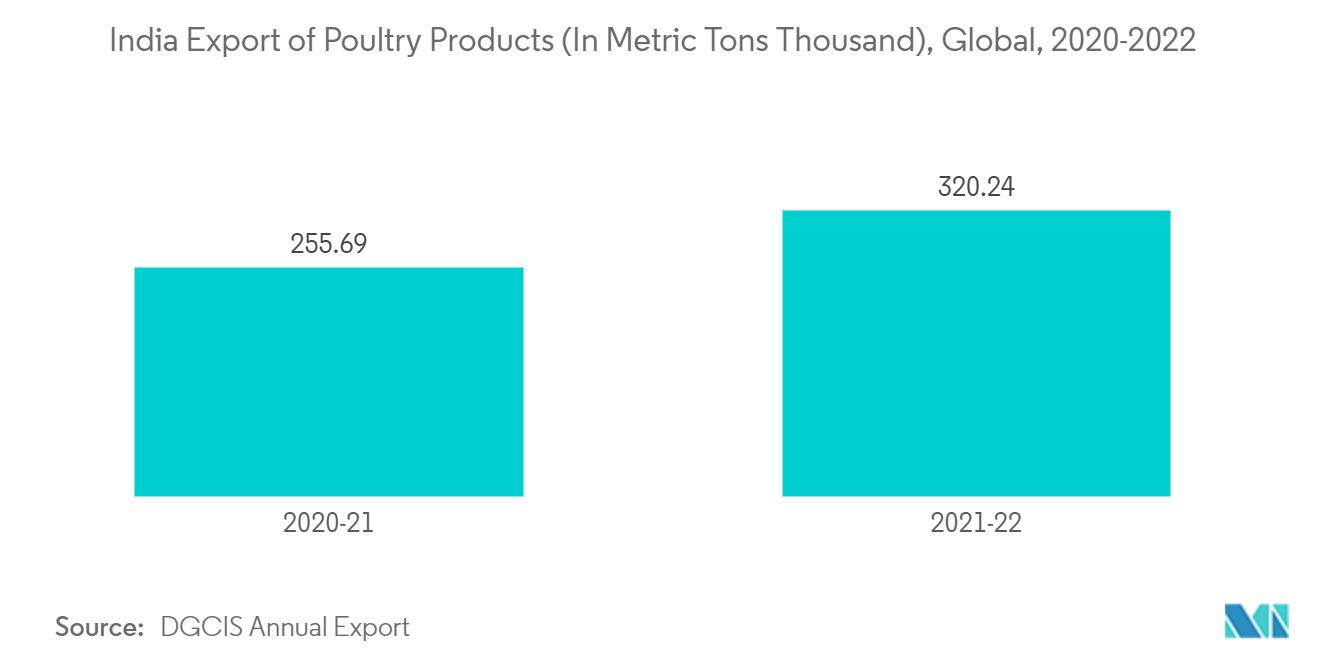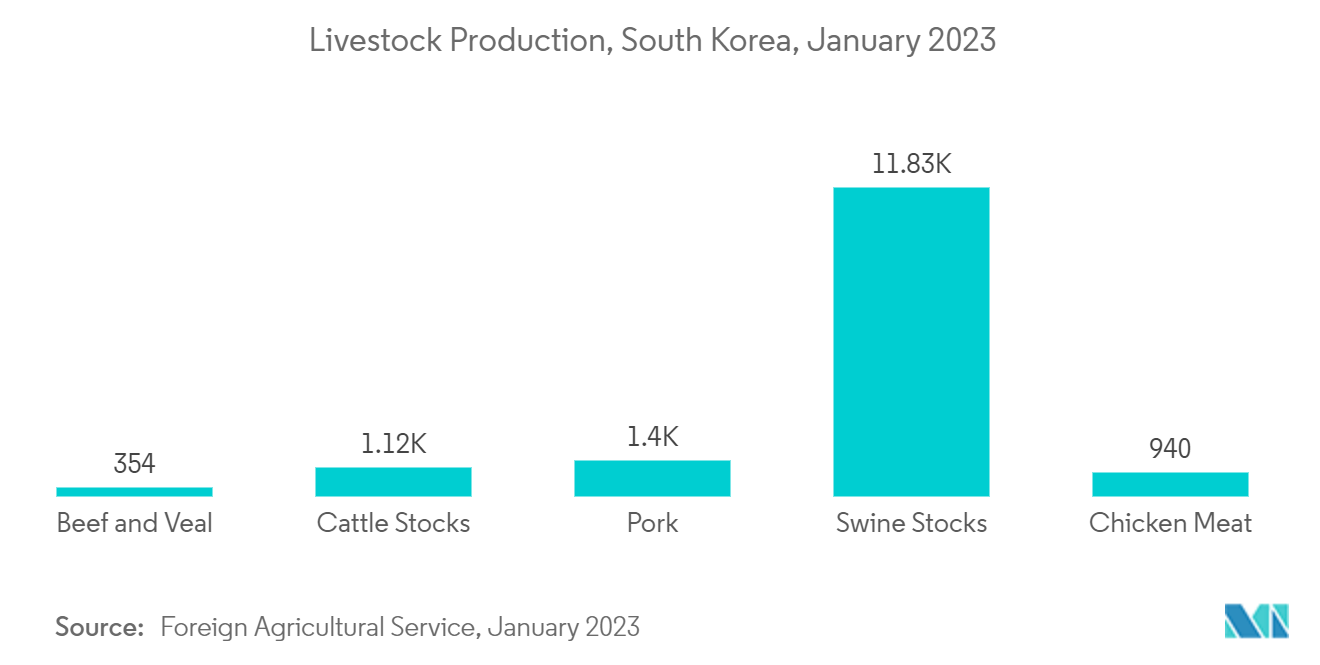Market Trends of APAC Anticoccidial Drugs Industry
Poultry Segment is Expected to hold a Significant Share in the Anticoccidial Drugs Market Over The Forecast Period
Coccidiosis is a parasitic disease with a great impact on poultry farming due to the high percentage of morbidity. The increase in the poultry population and the high prevalence of coccidiosis in poultry drive market growth. For instance, according to an article published by Veterinaria Digital, in September 2022, coccidiosis in India is highly prevalent, especially in the monsoon season. It causes many economic losses in the poultry sector, with high mortality and marked by worsening production indices. Additionally, according to the above source, the prevalence of coccidiosis in broilers ranges between 5% and 70% depending on many factors, such as management, the presence of vectors such as Alphitobius, high temperature, and humidity conditions, among many others. Thus, the region's high prevalence of coccidiosis is expected to drive market growth over the forecast period.
Furthermore, according to a report published in September 2022 by the United States Department of Agriculture (USDA), poultry production in China is expected to remain stable at 14.3 million metric tons in 2023. Additionally, according to the above source, China's poultry exports are expected to increase by 5% in 2023. Thus, with increased poultry production, the chances of developing coccidiosis increase, thereby increasing the demand for anticoccidial drugs.
Thus, owing to the factors above, the studied market is expected to witness significant growth over the forecast period.

South Korea is Expected to Dominate the Asia-Pacific Anticoccidial Drugs Market Over the Forecast Period
The major factors attributed to the market growth in South Korea are the rising animal population and animal expenditure, along with the growing burden of coccidiosis in the country. Besides, the country is actively involved in initiatives like research surveys and diagnostics to promote good pet health and awareness about pet diseases. For instance, the 2021 open survey of Pet Trends Report stated that in 2020, 73% of millennial pet owners prioritized pets' well-being by spending out-of-pocket. Additionally, according to the above report, medical treatment, insurance, and pet hotels were chosen as the top 3 features pet owners wanted to see growth in. According to the survey, between 2020 and 2021, a pet owner spent, on average, around USD 450 on veterinary care. Hence, pet owners' priority for their pet well-being is expected to drive market growth in South Korea over the forecast period.
The country's veterinary regulatory organizations were compelled to establish national animal health insurance programs due to the increasing expenses of owning pets and paying for veterinary care. For instance, in October 2021, the Ministry of Agriculture, Food and Rural Affairs instructed to conduct a nationwide study in Korea to understand the expenses of veterinary care and treatments to introduce state-run health insurance for pets. Such initiatives are likely to boost the demand for anticoccidial drugs during the forecast period.
Thus, owing to the abovementioned factors, the studied market in South Korea is expected to witness significant growth over the forecast period.


